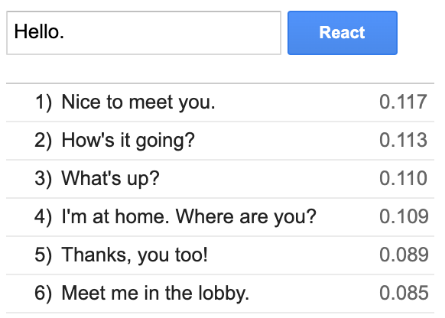Tools we love – Semantic Reactor
- Product Reviews
Welcome to a new blog series from AOT Technologies – Tools We Love. Tools are the enablers of magnificent creations, be it mechanical tools or software tools, we have been working for years with countless tools which are the stepping stones on our journey towards excellence.
Natural Language Processing (NLP) is one of the most hottest topics in the industry now and GPT-3 models have hyped it to the next level. Text data is available everywhere from public data like Twitter, Reddit, blogs etc, to other private data. This means NLP tools are of great relevance and demand for analysing and processing large amounts of textual data.
Semantic Reactor
Understanding context from the text for machines is considered to be a very complex, time-consuming and costly process. Yet this is where Semantic Reactor under Semantic experiences comes to make communication with digital services like chatbots, search engines, games very easy. It’s a Natural Language Understanding (NLU) tool, built with advanced machine learning models.
Semantic Reactor is used for a lot of purposes like finding the response queries matching a given input text, writing dialogues in games, responding to questions in various digital services, and many more. It’s a tool to experiment with ML models from Google Sheets.
Semantic Reactor is an easy to use tool which can be installed from G-suites business apps. Once installed we can find semantic reactor in Google sheets add on section. This makes it easy to load any text data and gain understanding based on it. Any changes in the Google Sheets can be reloaded and a new model is being created for you.
Semantic Reactor consists of mainly two features that are:
- Semantic Similarity
- Input/ output response
There is an additional feature to say with/without Ranking(to rank response based on certain rules)
Semantic similarity
Let’s go into details of semantic similarity. Chatbots are being used in real-world applications a lot. The majority of questions will be already anticipated and have a labelled answer. Yet the problem is that the same question can be framed in multiple ways by different people interacting with a chatbot.
Given an anticipated question to ask in a chatbot like: Where is the taxi stand?
There can be a lot of queries which are similar yet need the same anticipated result:
Is the taxi stand near a motel?
Where can I get a taxi?
With semantic similarity, we examine which anticipated question matches our input statement with a probability. It helps us understand the responses and return a list of queries which are similar to the input query to match similar word as input. All this uses complex machine learning models techniques and can be used easily used inside a Google Sheet for your use case.
In the given above image, we are asking ‘Did you see anything during dinner?’ as a question, and anticipated questions and answers which match our input question are being returned by Semantic Reactor.
Input/Output Response
Next mode is the use of Input/output response which be used for getting the appropriate reply for a given input text from the sheet without anticipated answers, given a sequence of conversation. You can’t always anticipate what the user will type. Given an input text query like input text like ‘Hello’, a list of queries which match similar words are given as replies. As shown below.
Semantic Reactor comes with three varieties of models:
- Local – basic tflite model
- Basic Online – Universal sentence encoder model in English
- Multilingual Online – Universal sentence encoder multilingual q-a model in Chinese-traditional, English, French, German, Italian, Japanese, Korean, Dutch, Polish, etc.
Based on Semantic Reactor, Google has built various interactive chatbots to play Mystery of Three bots which can be found on GitHub. Also, you can experiment it to find and understand valuable insights from your data very easily.
When handling large scale NLP data which needs to be cleaned, transformed and reconciled, use OpenRefine.
About the author:












